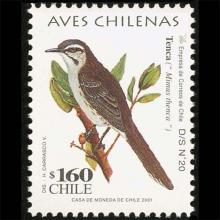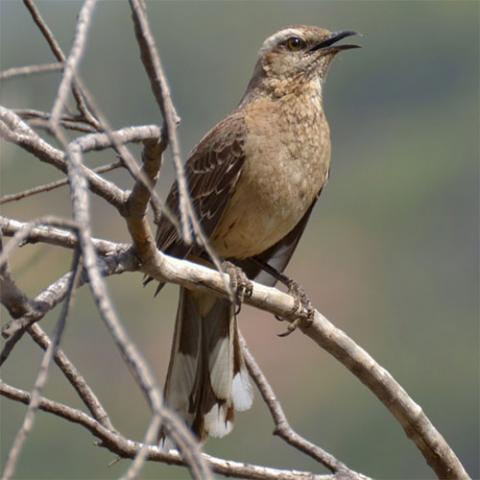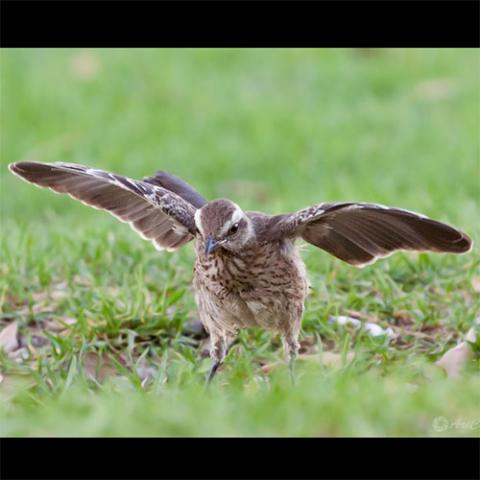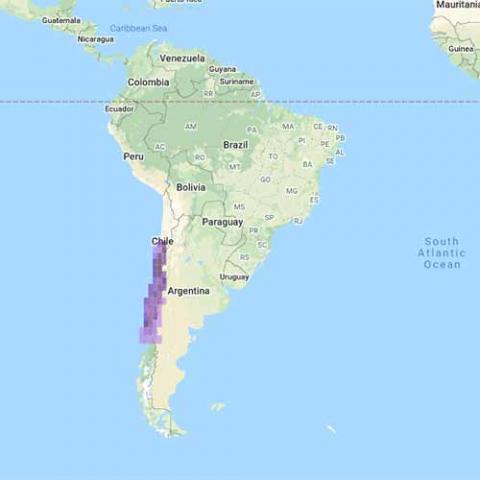NAMES
TAXONOMY
Chile
Issued:
Stamp:
Mimus thenca
Chile
Issued:
Stamp:
Mimus thenca
Chile
Issued:
Stamp:
Mimus thenca
Link to recordings of: Mimus thenca (Chilean Mockingbird)
Genus species (Animalia): Mimus thenca
The Chilean mockingbird (Mimus thenca) locally known as tenca is a species of bird in the family Mimidae. It primarily inhabits Chile's northern half, though there are sightings in Argentina.
Its natural habitats are subtropical or tropical dry shrubland and heavily degraded former forest. An example habitat is the dry shrub and forest of La Campana National Park.
Description
The Chilean mockingbird is 28 to 29 cm (11 to 11 in) long and weighs 66 g (2.3 oz). The male is somewhat larger than the female. Adults have a wide whitish supercilium . Their crown, neck, and back are brownish gray with darker streaks and their rump browner. The wings and tail are blackish. The wings show two narrow bars when folded. The outermost tail feathers have white edges and most of the others have white tips. The throat is whitish, the chest brownish gray, the belly dirty white, and the flanks buffy with blackish streaks. The juvenile is similar but more buffy below with more streaks.
Distribution and habitat
The Chilean mockingbird is found in Chile from Copiapó Province in the Atacama Region south to Los Lagos, Puerto Montt, and Chiloé Island. A small population also exists in Neuquén Province, Argentina.
The Chilean mockingbird inhabits a wide variety of biomes, most of which are characterized by scrub, shrubs, or widely spaced trees. Examples include succulent coastal scrub, inland savanna bushland, and evergreen Chilean matorral. It also occurs at the edges of low relict woodland patches such as those in Bosque de Fray Jorge National Park and in disturbed habitats, though only rarely in urban areas. It shuns Nothofagus and Cryptocarya woodlands in the south and plantations of introduced pines in central Chile. In elevation it ranges from sea level to 2,200 m (7,200 ft).
Vocalization
The Chilean mockingbird sings year round, "a series of sweet, variable notes and phrases". It is an "excellent mimic of other bird species."
Reference: Wikipedia
Photos: Michael Weymann, Pablo Gutiérrez Maier, Ariel Cabrera Foix





